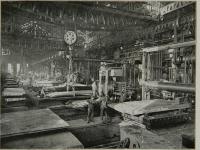In this lesson, students will examine another article from La Prensa to explore how the workers were received upon their arrival in Bethlehem. This article investigates rumors of anti-Mexican sentiment in Bethlehem as well as labor disputes between the newly arriving laborers and the steelworkers.
Students use information from the primary sources in Activity One to assess the accuracy of the information provided in the La Prensa article. Additionally, students assess whether the stories of worker tension were fabricated and explore the reasons that exaggerated reports may have emerged. Finally, students will be asked to connect the experiences of Mexican immigrants in the 1920's to those of immigrants today.



